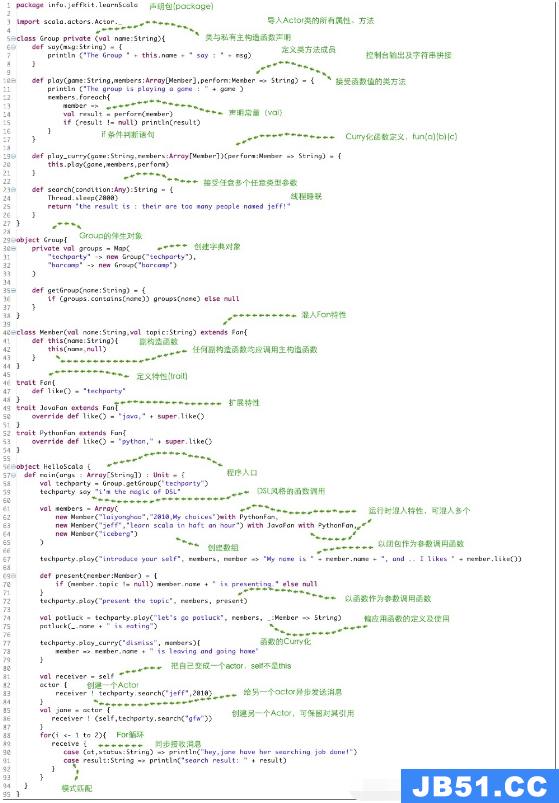scala> import scala.collection.mutable.Buffer import scala.collection.mutable.Buffer scala> val b = Buffer(1,2,3) b: scala.collection.mutable.Buffer[Int] = ArrayBuffer(1,3) scala> val l = List(1,3) l: List[Int] = List(1,3) scala> b == l res1: Boolean = true
我想知道为什么Buffer和List对象可以与true结果进行比较?
我一直认为,因为他们来自不同的阶级,所以在比较时他们必须是假的.有人可以解释一下,为什么这样实现?
解决方法
The collection libraries have a uniform approach to equality and hashing. The idea is,first,to divide collections into sets,maps,and sequences. Collections in different categories are always unequal. For instance,Set(1,3) is unequal to List(1,3) even though they contain the same elements. On the other hand,within the same category,collections are equal if and only if they have the same elements (for sequences: the same elements in the same oder). For example,List(1,3) == Vector(1,3),and HashSet(1,2) == Treeset(2,1).
It does not matter for the equality check whether a collection is mutable or immutable. (…)
所以这是因为scala.collection.mutable.Buffer和List属于同一类别(序列),然后将相等定义为具有相同的元素.


